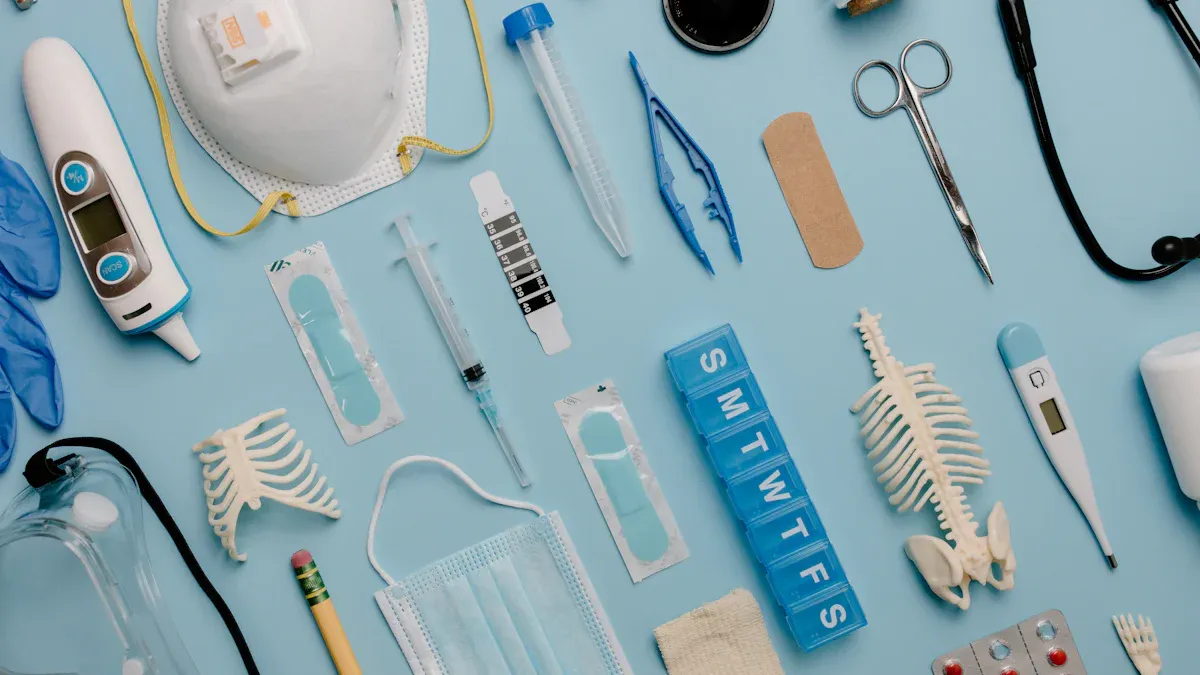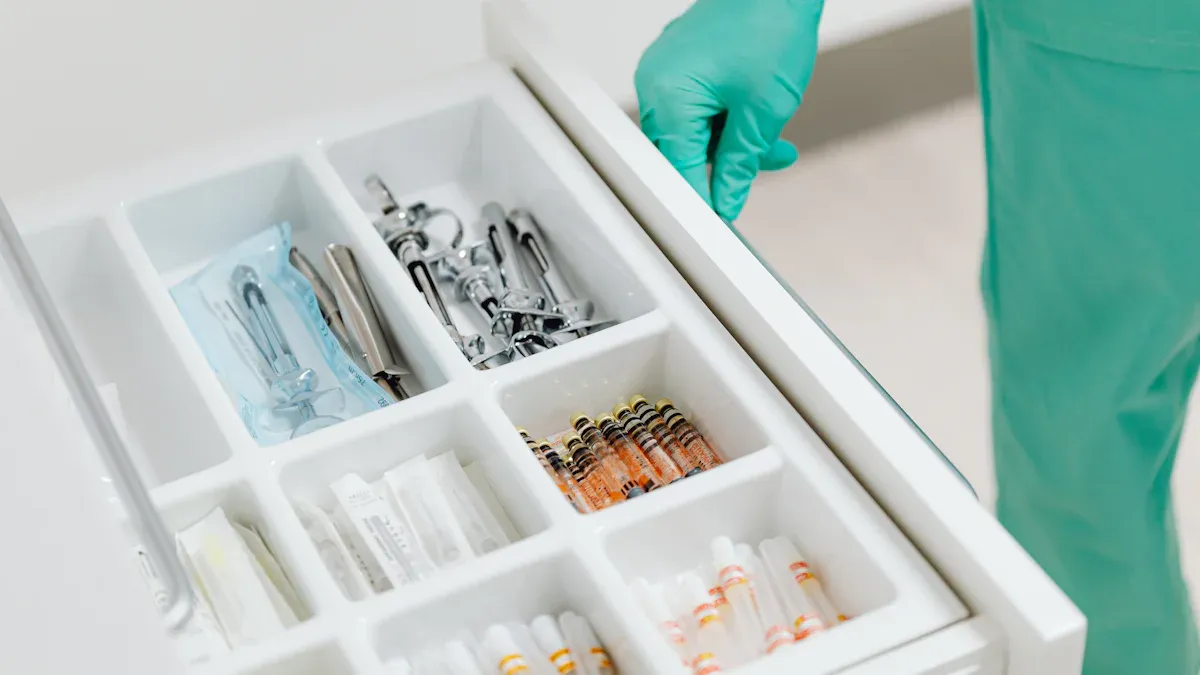
Medical devices play a vital role in healthcare, but safety and performance remain critical concerns. TAC Coating offers a groundbreaking solution by enhancing device functionality and reducing risks. This advanced technology addresses challenges like biocompatibility and durability. TAC Coating: The Future – Forward Technology Reshaping the Medical Device Landscape ensures better patient outcomes and improved medical standards.
Key Takeaways
- TAC coating makes medical devices safer by being more body-friendly. It lowers the chance of bad reactions in patients.
- The coating makes devices stronger and last longer. This means fewer replacements and lower costs.
- TAC coating kills germs, stopping infections. This helps patients heal faster and stay healthier.
TAC Coating: The Future – Forward Technology Reshaping the Medical Device Landscape

What is TAC coating?
TAC coating, short for Thin Advanced Coating, is a specialized surface treatment designed to enhance the functionality of medical devices. This coating creates a protective layer that improves the device’s performance and longevity. It is engineered to address critical issues such as biocompatibility, durability, and resistance to microbial growth. TAC coating is often made from advanced materials like polymers or ceramics, which are carefully selected for their unique properties. These materials ensure that the coating meets the stringent requirements of the medical field.
How is TAC coating applied to medical devices?
The application of TAC coating involves precision techniques to ensure uniform coverage. Manufacturers often use methods like chemical vapor deposition (CVD) or physical vapor deposition (PVD). These processes allow the coating to bond securely to the device’s surface. The coating is applied in controlled environments to maintain its quality and effectiveness. This meticulous process ensures that the coating adheres properly, even on complex or miniature devices. The result is a seamless layer that enhances the device’s performance without compromising its design.
Why is TAC coating critical for the medical device industry?
TAC coating plays a vital role in advancing medical technology. It enhances the safety and reliability of devices used in critical procedures. By improving biocompatibility, it reduces the risk of adverse reactions in patients. Its antimicrobial properties help prevent infections, a common concern in healthcare settings. Additionally, TAC coating contributes to the miniaturization of devices, enabling the development of more precise and less invasive tools. These benefits make it an indispensable innovation in the medical device industry.
Benefits of TAC Coating for Medical Devices

Enhanced biocompatibility and patient safety
TAC coating improves the compatibility of medical devices with the human body. It reduces the risk of adverse reactions, such as inflammation or rejection, by creating a non-reactive surface. This feature is especially important for implants and devices that remain in contact with tissues or blood for extended periods. By minimizing complications, TAC coating ensures safer outcomes for patients. Medical professionals rely on this technology to enhance trust in device performance during critical procedures.
Improved durability and wear resistance
Medical devices often face harsh conditions, including exposure to bodily fluids and repeated use. TAC coating strengthens these devices by providing a robust protective layer. This layer resists wear and tear, extending the lifespan of the equipment. For example, surgical tools coated with TAC maintain their sharpness and functionality over time. This durability reduces the need for frequent replacements, saving costs and ensuring consistent performance.
Antimicrobial properties for infection prevention
Infections pose a significant risk in healthcare settings. TAC coating addresses this challenge by incorporating antimicrobial properties. These properties inhibit the growth of harmful bacteria on device surfaces. Catheters, surgical instruments, and implants benefit greatly from this feature. By reducing infection rates, TAC coating contributes to better patient care and faster recovery times.
Contribution to device miniaturization and precision
TAC coating supports the development of smaller, more precise medical devices. Its thin and uniform application allows manufacturers to create compact tools without compromising functionality. Miniaturized devices improve patient comfort and enable less invasive procedures. TAC Coating: The Future – Forward Technology Reshaping the Medical Device Landscape plays a key role in advancing these innovations, making healthcare more efficient and effective.
Challenges in Applying TAC Coating
Technical challenges in application and adhesion
Applying TAC coating to medical devices requires precision and expertise. Manufacturers face difficulties in ensuring uniform coverage, especially on devices with intricate designs or miniature components. Adhesion problems arise when the coating fails to bond securely to certain materials, leading to reduced effectiveness. Variations in surface texture or composition can complicate the process further. Advanced techniques like chemical vapor deposition (CVD) or physical vapor deposition (PVD) help address these issues, but they demand specialized equipment and skilled personnel. These challenges highlight the need for continuous improvement in application methods to ensure reliable performance.
Regulatory compliance and medical standards
Medical devices must meet strict regulatory requirements to ensure patient safety. TAC coating introduces additional layers of complexity to compliance. Regulatory bodies evaluate the coating’s biocompatibility, durability, and antimicrobial properties. Manufacturers must provide extensive documentation and testing to prove the coating’s safety and effectiveness. Variations in standards across regions add to the difficulty, requiring companies to navigate multiple approval processes. These hurdles slow down the adoption of TAC coating, emphasizing the importance of collaboration between industry leaders and regulators to streamline compliance.
Cost implications for widespread adoption
The implementation of TAC coating involves significant costs. Advanced materials and specialized application techniques increase production expenses. Small-scale manufacturers struggle to afford these investments, limiting their ability to adopt the technology. Additionally, the need for rigorous testing and regulatory approval adds to the financial burden. While TAC coating offers long-term benefits like improved durability and patient safety, the upfront costs remain a barrier. Industry-wide efforts to reduce expenses and improve accessibility are essential for widespread adoption. TAC Coating: The Future – Forward Technology Reshaping the Medical Device Landscape depends on overcoming these economic challenges.
Innovations and Future Trends in TAC Coating Technology
Advancements in TAC coating materials
Researchers continue to explore new materials to enhance the performance of TAC coating. Innovations in nanotechnology have introduced nanoparticles that improve coating strength and flexibility. These materials allow for thinner layers without compromising durability. Scientists are also experimenting with bioactive compounds to make coatings more interactive with human tissues. This approach could lead to faster healing and better integration with implants. By refining material properties, TAC coating evolves to meet the growing demands of modern medical devices.
Integration with smart medical devices
The rise of smart medical devices has created opportunities for TAC coating to play a pivotal role. Coatings now incorporate conductive materials to support electronic functions. For example, sensors in wearable devices benefit from coatings that protect against moisture while maintaining signal accuracy. TAC coating also enhances the durability of microchips embedded in implants. These advancements align with the vision of TAC Coating: The Future – Forward Technology Reshaping the Medical Device Landscape, enabling smarter and more reliable healthcare tools.
Personalized and patient-specific applications
TAC coating technology is advancing toward customization for individual patients. Coatings can now be tailored to match specific biological needs, such as unique tissue compatibility or targeted drug delivery. This personalization improves patient outcomes by reducing complications and enhancing device effectiveness. For instance, coatings designed for a patient’s unique blood chemistry can optimize the performance of cardiovascular implants. These developments mark a significant step toward precision medicine.
Role in sustainable and eco-friendly medical devices
Sustainability is becoming a priority in medical technology. TAC coating contributes by using eco-friendly materials and reducing waste during production. Researchers are developing biodegradable coatings that break down safely after use, minimizing environmental impact. Additionally, the durability of TAC coating extends the lifespan of devices, reducing the need for frequent replacements. These efforts align with global goals for greener healthcare solutions, ensuring that innovation benefits both patients and the planet.
TAC coating has revolutionized medical device safety and performance. Its benefits include enhanced biocompatibility, improved durability, and antimicrobial properties. These advancements ensure better patient outcomes. Continued innovation and collaboration among researchers and manufacturers remain essential. Together, they can unlock TAC coating’s full potential, shaping a safer and more efficient future for medical technology.
FAQ
What types of medical devices benefit most from TAC coating?
Devices like implants, catheters, and surgical tools gain the most from TAC coating. These devices require enhanced biocompatibility, durability, and antimicrobial properties for optimal performance.
How does TAC coating improve patient safety?
TAC coating reduces risks of infection and adverse reactions. Its biocompatible and antimicrobial properties ensure safer interactions between medical devices and the human body.
Is TAC coating environmentally friendly?
Yes, researchers are developing eco-friendly and biodegradable TAC coatings. These innovations aim to reduce waste and environmental impact while maintaining device performance.


